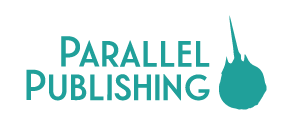From the Parallel Worlds Magazine archive.
Gloom of Kilforth is, undoubtedly, the most beautiful game I own. It’s the only game I’ve ever bought purely on the basis of the art — and I’ll explain why.
There are 25 locations, four decks of encounters, four decks of character upgrades, 25 events, eight races, eight classes and four bosses. Each and every one of these cards has a unique image. There are roughly 250 unique paintings in this game, and every image — from something as significant as a pirate captain or crumbling temple, or as banal as a simple shield or grassy plain — is afforded a beautiful and detailed fantasy painting.
This may seem like an odd way to open a review, but I want to impress upon you just how unique Gloom of Kilforth is. Single-use card art of this quality and number is rarely done in the board games industry as it’s expensive and time-consuming. Fantasy Flight’s Arkham Files games come close (e.g. Arkham Horror, Elder Sign) and the way they justify it is by using the same assets across a plethora of titles (seriously, if you’ve seen a dagger in one Arkham game, you’ve seen all of them). So before I set out the gameplay, I wanted to impress upon you that Gloom of Kilforth is already a rarefied and wondrous title in the landscape of gaming.
Gloom of Kilforth has a joyful sense of humour which never undermines the gritty atmosphere, but sets it apart from so many po-faced fantasy worlds.
Gameplay itself is a highly non-linear role-playing adventure. You begin with a 5×5 world map of cards, made up of 25 locations: one central city and 24 randomly allocated locations which are unique but aligned to one of four landscape types (mountain, plain, forest, badlands). Each player chooses a boss, as well as a limited draft of race/class combinations which will form your basic character. You also gain one of eight plots — called Sagas — in which you must complete four chapters before tackling your own nemesis. Players take a limited number of actions each day, drawing an encounter card each time they enter a location which doesn’t already have one.
Depending on the location type, encounters are drawn from different decks and each environment is weighted differently. Mountains, for example, contain more enemies, whereas the swamps contain more quests. Some encounters have to be dealt with straight away (or escaped) whereas some are location features which can be tackled at leisure. Each contains keywords which you will collect and spend to advance your own Saga. Without getting into the minutiae of rules, suffice it to say each character has different stats for Fighting, Magic, Stealth and Dialogue and rolling dice according to these stats will enable you to tackle these encounters. It’s fairly standard for games of this type and it works solidly in this one.
You can play solo, co-op and even competitive multiplayer, in which it’s a race to win your boss battle first. The challenge in Gloom of Kilforth is one of risk versus resource management. Each day you have limited actions and every night triggers an event, spawning new effects and encounters and causing one location to fall to ‘the Gloom’. This location flips to its faded side and now provides a single point of damage to any character who ends their turn there. Once all 25 locations have fallen, the game ends. Additionally, each boss is attuned to a single location type, and when these locations fall to Gloom, they release a plot card which provides the boss with additional abilities if they are not removed before the final encounter. Thus, the whole adventure is against the clock — limited actions, limited days. Taking damage not only risks a penalising respawn, but each hit point of damage drains your action pool, meaning that poorly-considered battles actually reduce the actions you have available. The game world fills with opportunities and challenges and you will never have enough time to tackle all of them.
Every choice is highly significant, and ultimately that feels wonderful. You may acquire an ally who increases your fighting strength, but if that character is a Berserker, they can be sacrificed to win a single battle without even rolling a die. So which is the better use? One-off spells abound, as well as features such as Titles your character may have earned, equipment upgrades and once-per-day perks. You can only have a limited number of upgrades in play, so choosing the right build for the task at hand is a tantalising puzzle. There’s also a katana-carrying ‘Ninja Dog’ you can recruit, so… there’s that. Gloom of Kilforth has a joyful sense of humour which never undermines the gritty atmosphere, but sets it apart from so many po-faced fantasy worlds.
The challenge in Gloom of Kilforth is one of risk versus resource management.
It’s rare these days to have an entirely card-driven adventure which provides such a rich emergent story. With the exception of excellent titles such as Arkham Horror: The Card Game and Pathfinder Adventures, most boxed roleplaying games play out with plastic miniatures in a dungeon of room tiles. Gloom of Kilforth’s scope is much broader. Far from a ‘hack and slash’ through limited dungeons, this is an odyssey across an epic map; and even if victory is achieved, it often feels desperate and costly. There’s a surprising emotional core to every game.
Your character won’t be equipped to deal effectively with every drawn encounter, so the map will fill with battles you had to flee, the noble you couldn’t convince, the cluster of Gloom locations you are trying to avoid. The map records your story better than a journal could. Like any good roleplaying adventure, the stories that stick in your mind will be the ones that are generated through play; and, in my experience, the encounter and reward decks are so large you will rarely get through more than a third of them in a single play — so replay variety is huge.
I absolutely recommend Gloom of Kilforth. It can be tough to learn, partly due to the originality of the design and partly because of the large number of mechanisms that allow such flexible gameplay. However, the manual is well-written and ordered, and features something which I think should be included in all manuals: a full index of keywords with page references! As you play, you’ll want to pore over every card you draw, and enjoy the little details, odd references and in-jokes. You’ll feel every sacrifice and encounter that goes awry. And it’s one of very few games I’d recommend regardless of what else you already own, simply because it is completely original and utterly beautiful.
1-4 players
Mature themes and images
Publisher: Hall or Nothing Productions
RRP £55.79



